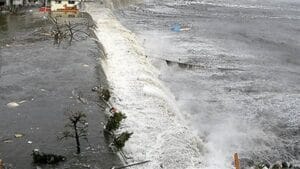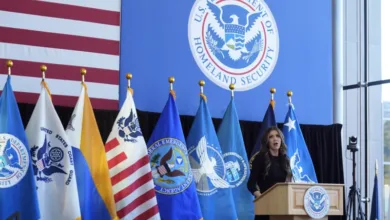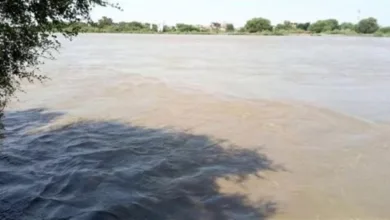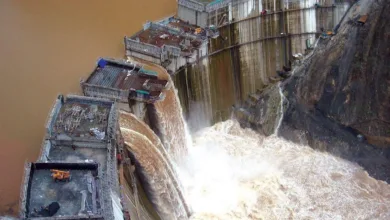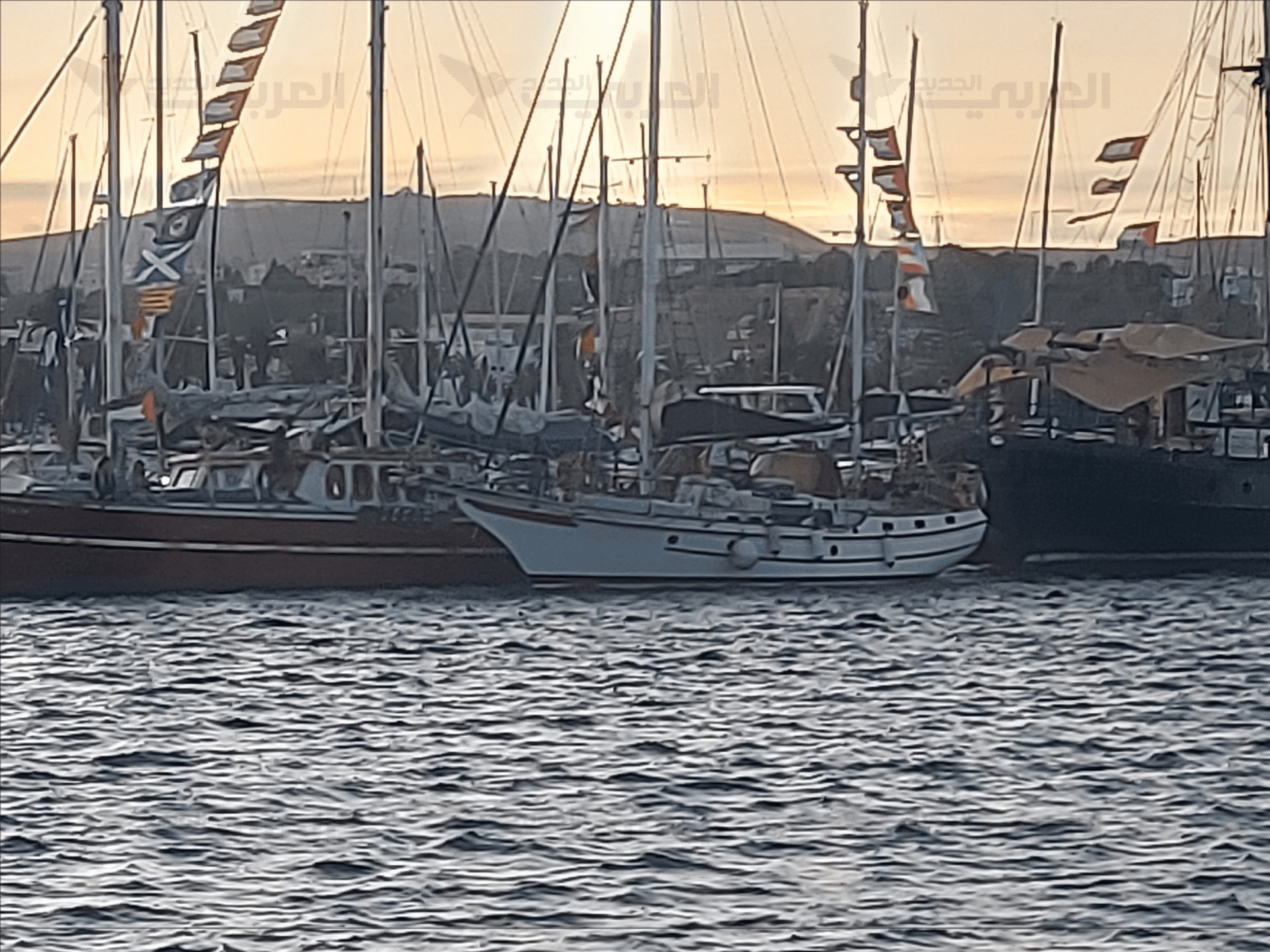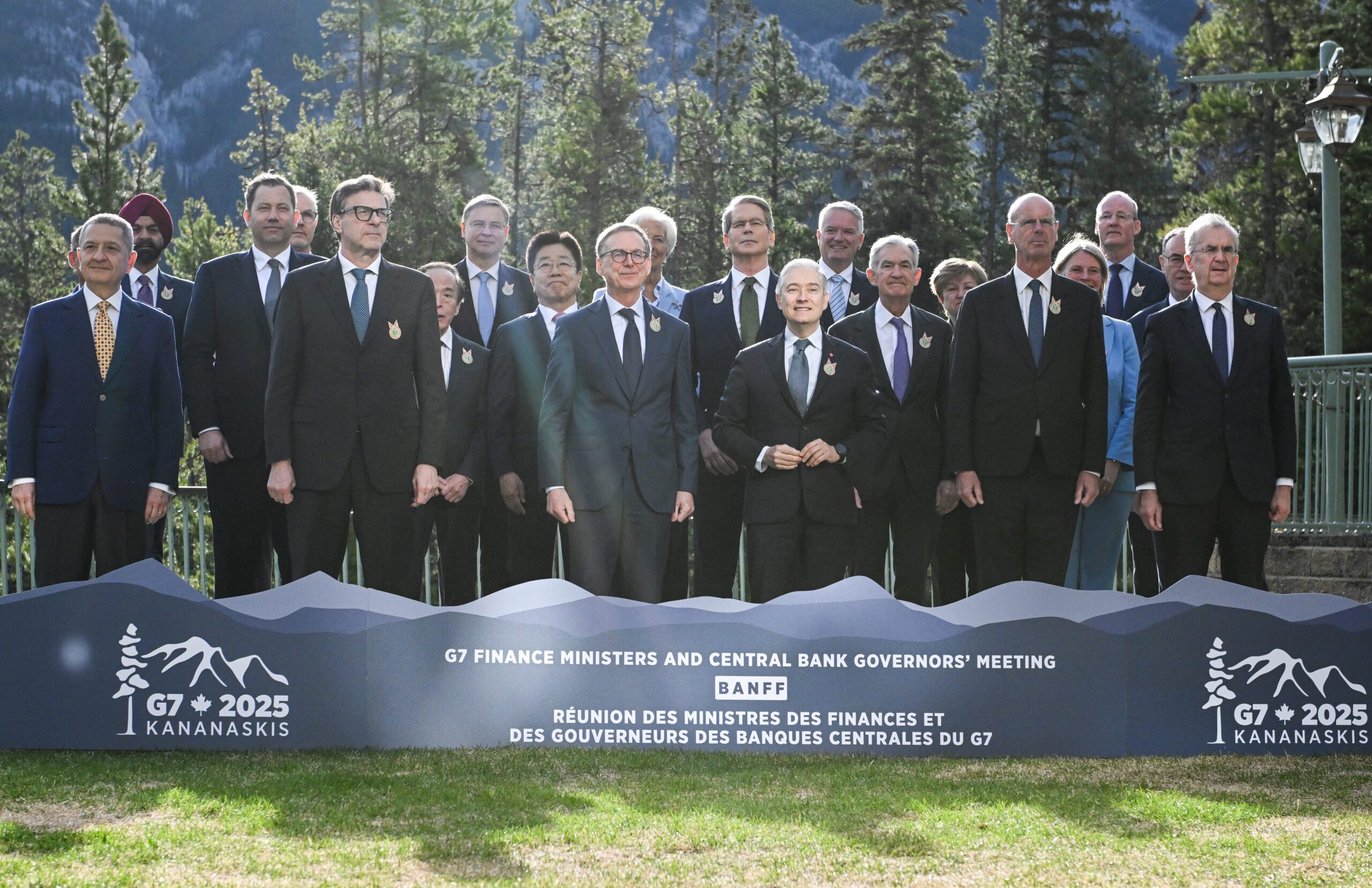Tsunami Warnings in Hawaii and Russia Spark Global Alarm – What’s Really Happening?
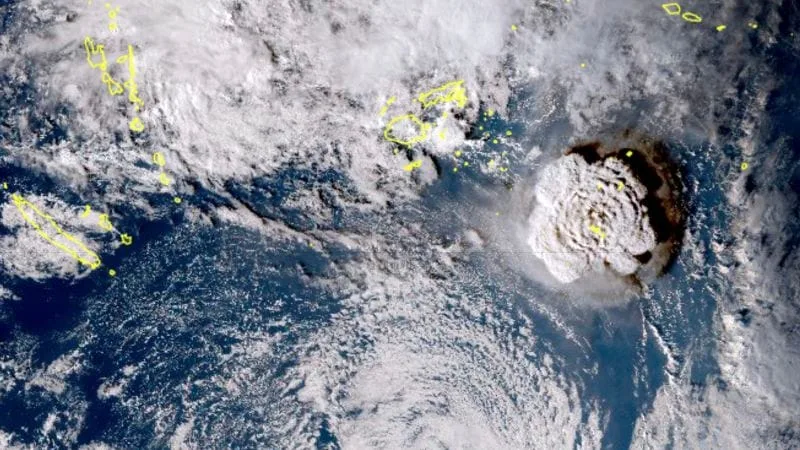
In a day of mounting anxiety, simultaneous tsunami alerts have shaken coastal communities in Hawaii and parts of Russia, triggering evacuations, viral videos, and a flood of speculation on social media.
Let’s break down what we know, what’s confirmed, and what remains uncertain.
(Sources: Fox News, BBC, The Guardian, Reuters, NHK)
Watch the Waves Hit: Live Video from Hawaii Coastline
What Happened?
Early reports say:
-
A powerful underwater earthquake near the Kuril Islands, Russia (magnitude estimated at 7.6)
-
Followed by smaller seismic tremors under the Pacific Plate near Hawaii
Both triggered automated tsunami warnings:
-
Hawaii residents reported sirens at dawn
-
Russian Far East regions ordered evacuation from low-lying areas
Photo: Emergency sirens sound at Waikiki Beach
Official Statements
-
Hawaii Emergency Management: “Out of an abundance of caution, we advise residents to move to higher ground.”
-
Russian Ministry of Emergencies: “Monitoring the situation closely; so far, no destructive waves reported.”
USGS and Japan Meteorological Agency both confirmed elevated wave activity.
Why It’s Trending
Social media lit up with hashtags:
-
#TsunamiWarning
-
#Hawaii
-
#RussiaTsunami
-
#breakingnews linking directly to site
Viral TikToks show retreating water at Hawaiian beaches and crowded roads as locals flee inland.
Historical Context
-
Hawaii sits in the Ring of Fire, vulnerable to tsunamis from Pacific quakes.
-
Russia’s Kuril Islands are a major seismic hotspot.
-
In 2011, a magnitude 9.0 quake off Japan triggered a devastating tsunami, remembered worldwide.
What Scientists Are Watching
Experts from columbia university note:
-
It’s rare to see nearly simultaneous alerts thousands of miles apart.
-
Could hint at broader tectonic stress shifts.
-
“No direct link confirmed, but monitoring continues,” say seismologists.
Tourism & Economy Impact
Tour operators in Hawaii canceled tours.
Markets in Japan and Russia briefly dipped on fears of disaster losses.
Hotels shifted guests to higher floors as a precaution.
Local Reactions
Quotes from Twitter and news interviews:
-
“We’ve lived through false alarms before, but this felt different,” – Honolulu resident.
-
“Police told us to get to higher ground. We grabbed pets and left,” – Vladivostok local.
Fake News & Rumors
Fact-checkers urge caution:
-
No evidence yet of “massive wave” photos trending online.
-
Some viral images traced to past tsunamis.
What to Do if You’re There
-
Follow local emergency channels.
-
Move inland or uphill.
-
Do NOT go to the shore to film waves.
An earthquake measuring 8.8 magnitude struck off Russia’s eastern seaboard on 29 July, setting off tsunami warnings and watches across a vast stretch of the Pacific. The tremor, one of the strongest recorded in recent history, immediately prompted emergency protocols in places like Hawaii, Alaska, and along the west coast of the United States.
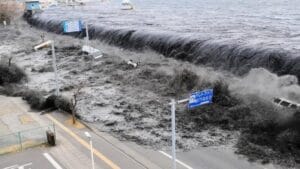
In Hawaii, sirens and emergency messages were sent out as officials warned of potential flooding in coastal and low-lying areas. People were urged to evacuate to higher ground. Similar alerts rippled across the Pacific, reaching as far as Japan, Russia’s Kamchatka Peninsula, and even countries in Latin America and Southeast Asia.
Understanding tsunami warnings: What each alert means
The alerts have been issued in varying forms, depending on the region’s risk level.
- Tsunami Warning: This is the highest level of emergency. A warning means a tsunami is either expected or already happening, with the likelihood of dangerous coastal flooding and strong currents. Residents are told to evacuate immediately.
- Tsunami Advisory: Indicates possible strong waves or currents. Flooding is possible but less likely to be widespread. Southern California is currently under this advisory, with waves expected to arrive during early morning hours.
- Tsunami Watch: This means a tsunami could form, but there is not enough data yet to confirm it. Most of the US West Coast is under a watch, with residents being advised to monitor updates closely.
These designations can change quickly. On Tuesday evening, Crescent City in Northern California was upgraded from a watch to a warning. The National Weather Service warned of possible waves up to five feet.
Hawaii, Japan and Russia already seeing impacts
The first tsunami waves have already reached Hawaii, and some may be as high as 10 feet above normal. Hawaii Governor Josh Green said residents should leave coastal zones “right away” as waves could “wrap around the islands”.
Russia’s Kamchatka Peninsula was hit soon after the quake. In Severo-Kurilsk, multiple tsunami waves swept through, damaging infrastructure and even collapsing a kindergarten building. No injuries have been reported, but the district declared a state of emergency, according to TASS.
In Japan, tsunami waves have already landed along the eastern coast. These range from Hokkaido in the north to Honshu, including areas near Tokyo. So far, the waves have been relatively small, measuring around 60 centimetres. Still, over 1.9 million people across 21 prefectures are under evacuation advisories. Photos from Hokkaido show residents gathering on rooftops for safety.
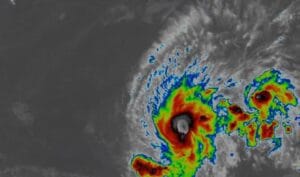
Elsewhere, countries including Chile, Peru, Mexico, Panama, Taiwan, Indonesia and the Philippines have also issued tsunami alerts.
Why tsunamis are so dangerous
Tsunami waves don’t behave like regular waves. They can look like fast-moving floods, surging inland over several minutes and then retreating, only to return again. These events can last for hours and hit without warning.
“A tsunami wave is extremely different than your typical ocean wave … it’s very much just like a torrent of floodwater coming at you at the coastline,” said Helen Janiszewski, assistant professor in the Department of Earth Sciences at the University of Hawaii at Mānoa, speaking to CNN.
She added, “Water moving quickly can really knock a person down quite easily. You don’t need a lot of it. And so it’s very, very dangerous.”
Janiszewski also warned that the impact depends heavily on local geography. “It’s not just the coastlines that are facing the direction the wave is coming from … there may actually be very complicated patterns as it arrives.”
How tsunamis form and travel
Tsunamis are triggered when the ocean floor is suddenly displaced, often by an earthquake, volcanic eruption or landslide. That massive shift in water travels outward across the ocean at high speeds. In deep water, tsunami waves aren’t very noticeable. But when they approach the shore, they slow down and rise up dramatically.
According to the US National Weather Service, waves can appear as a fast-rising flood or a tall wall of water. In some cases, the water pulls back from the coast first, creating an eerie low tide effect before crashing back in.
Crucially, tsunamis are not single events. They often arrive as a series of waves that can flood, recede, and reflood land over hours. Large tsunamis can reach more than a mile inland.
What happens in Hawaii could indicate broader impact
Harold Tobin, a seismologist at the University of Washington, said the Hawaii response could offer a glimpse of what’s to come elsewhere. “What will be seen in Hawaii in the upcoming hours will be a test of what we might expect around the rest of the Pacific rim,” he told CNN.
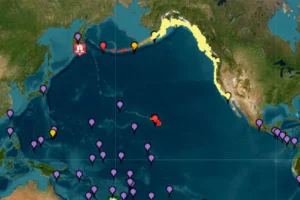
He pointed out that some offshore quakes release energy outward into the ocean rather than back toward land. If this one follows that pattern, “then that will be a real win for everyone.”
“It could scale anywhere from really not any significant damage at all at long distances, to significant damage in areas that are right at coastal levels,” Tobin added.
“It’s important to emphasize people don’t need to panic if they’re far away from the shoreline or more than a few meters above sea level for most distant regions. But right at the shoreline in harbours, marinas, and coastal towns, that’s where the hazard lies.”
Monitoring the waves in real time
Forecasting tsunamis relies on a system of buoys placed across the ocean. These buoys, called DART (Deep-ocean Assessment and Reporting of Tsunamis), were developed by the Pacific Marine Environmental Laboratory in Washington.
Once a major earthquake is detected, the buoys measure sea-level changes and send the data to tsunami warning centres. These measurements help experts adjust warnings and advise on evacuations. This real-time information is critical, especially in the first few hours after a quake.
Despite the system’s importance, the laboratory responsible for DART is facing possible closure under the latest NOAA budget proposals.
Tsunami Do’s and Don’ts: What you should know
Tsunami preparedness can save lives. Here’s what experts recommend at each stage.
Before a Tsunami
- Know whether you live in a tsunami-prone area.
- Learn your local evacuation routes.
- Pick a shelter on high ground or far inland.
- Set up a family communication plan.
- Keep emergency kits ready and practise evacuation drills.
During a Tsunami warning
- If there’s an earthquake, drop, cover and hold on.
- When the shaking stops, don’t wait. Move immediately to higher ground.
- Never go to the shore to watch the waves.
- Stay away from rivers, beaches and low-lying areas.
- If at sea, move to deeper water if advised.
“Urgent action should be taken to protect lives and property,” the Pacific Tsunami Warning Center in Honolulu said in a statement. Waves were expected across Hawaiian coastlines by 7 p.m. Tuesday local time.
Where to seek shelter
If you live in a tsunami zone and can’t evacuate inland:
- Go to a reinforced, multi-storey building like a hotel.
- Head to the upper floors.
- Never stay in small structures or low-lying homes.
- Offshore reefs may reduce the impact slightly, but they do not remove the danger.
After a tsunami
- Wait for official updates before returning home.
- Stay away from flooded roads and unstable buildings.
- Avoid touching anything electrical in wet areas.
- Watch out for debris, mudflows and landslides.
- Use texts or social media to contact loved ones.
- Assist the elderly, disabled and children.
- Don’t enter disaster zones unless authorised.
- Take photos of any damage to support insurance claims.
What not to do
- Don’t return to the coast until officials give the all clear.
- Don’t assume it’s over after the first wave.
- Don’t try to swim or surf during tsunami activity.
- Don’t perform risky rescues yourself. Call professionals.
Russia earthquake most powerful on record
If confirmed, the 8.8 magnitude quake will rank among the ten strongest ever recorded. It would be tied for sixth place with the 2010 earthquake in Chile and the 1906 Ecuador quake.
The most powerful quake ever recorded was the 1960 Valdivia earthquake off Chile, which reached a magnitude of 9.5.
According to Michigan Technological University, earthquakes of 8.0 or higher are capable of widespread destruction and long-lasting consequences for affected communities.
As experts continue to monitor this event, coastal residents across the Pacific are being told to remain alert, follow official advice, and stay away from the water. The situation remains fluid.
While early data shows moderate waves so far, the day’s events highlight real risk coastal communities face.
As experts analyze seismic data, residents in Hawaii, Russia, and the Pacific stay alert – hoping today’s scare won’t become tomorrow’s tragedy.
Stay tuned for updates as this story develops.
